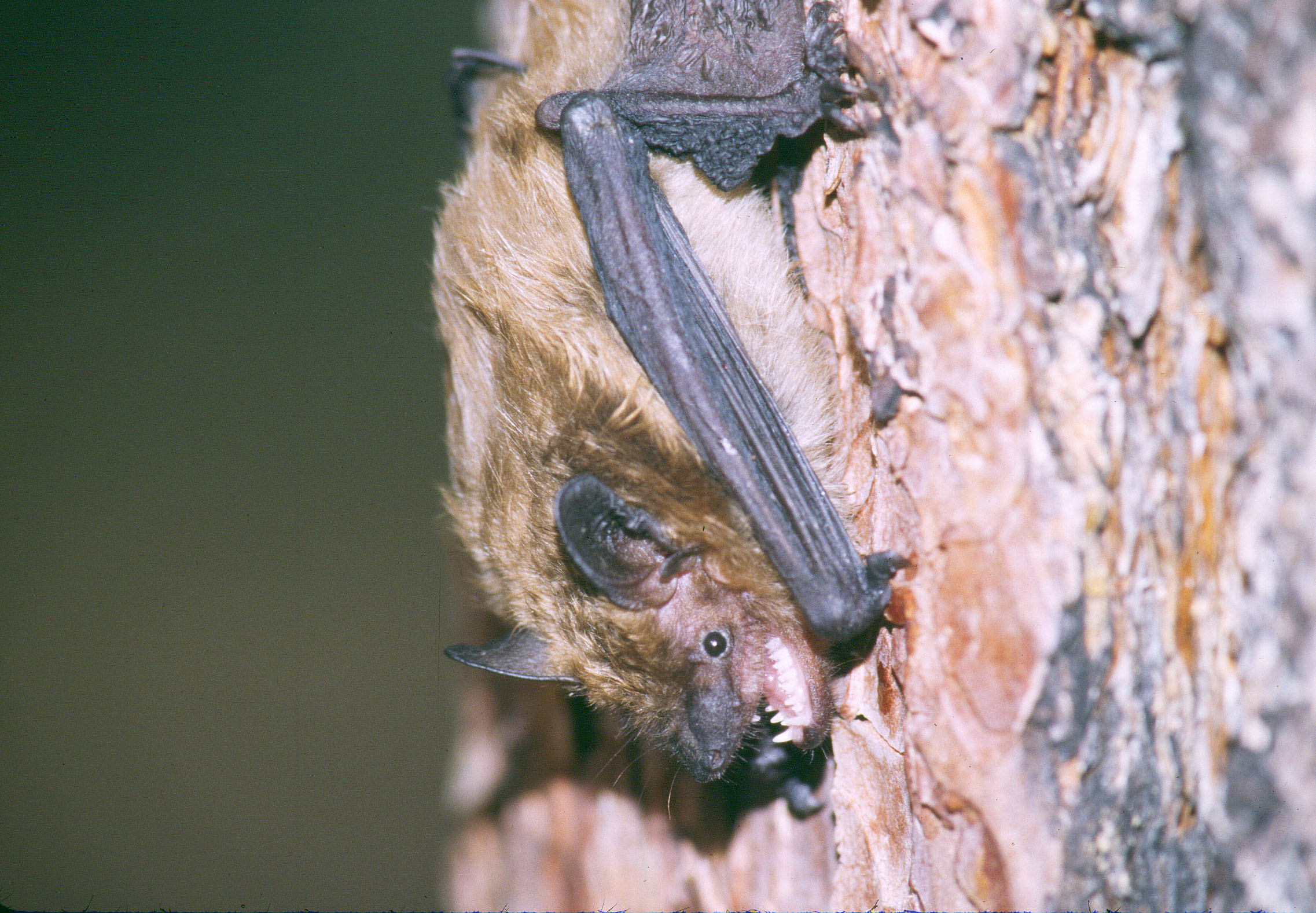
Big brown bat. Photo by Keith Geluso.
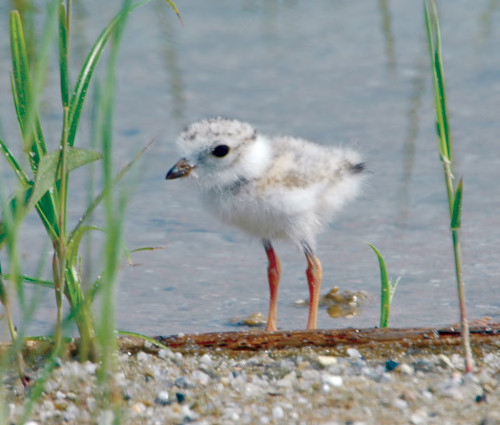
Piping plover chick. USFWS image.
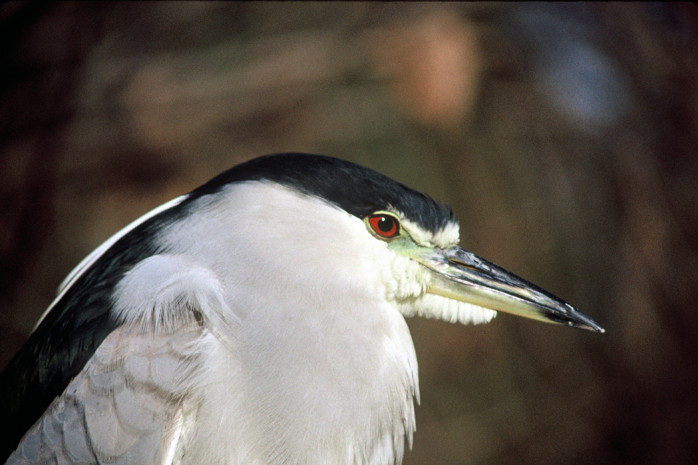
Black-crowned night heron. USFWS image.
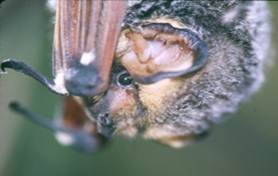
Hoary bat. Photo by Keith Geluso.
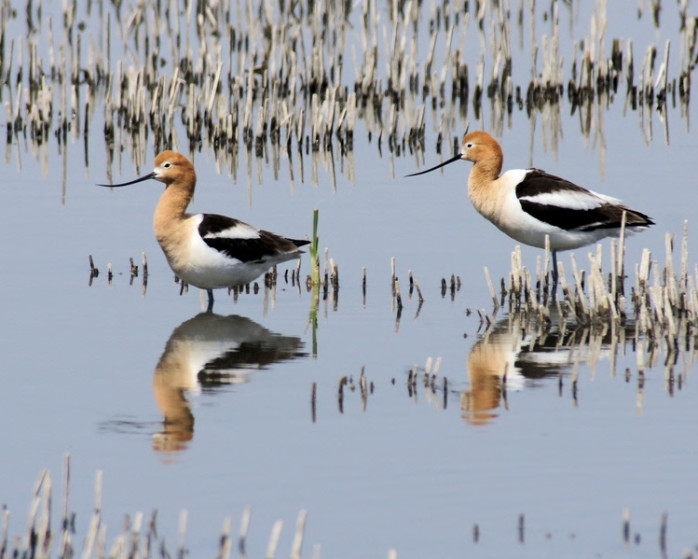
American avocet. USFWS image.
Potential Impacts
The potential impacts of wind energy development on wildlife are divided into direct and indirect impacts.
Direct Impacts
Direct impacts or mortality occur when birds and bats collide with wind turbines, towers, or transmission lines servicing wind farms. The change in pressure around a wind turbine can cause internal hemorrhaging or barotrauma that leads to death in bats.
The greatest number of turbine-related mortalities occur in and along migration routes and include:
- Mountain passes
- Large river valleys
- Ridge-tops and bluffs
- Stop-over sites such as wetlands
Study Results
Birds:
- An overview of research from the past 20 years indicates that bird collisions range from 0 up to more than 30 collisions/turbine/year (Kuvlesky et al. 2007).
- Passerines (night migrants in particular) have been estimated to have a collision rate of 2.19 birds/turbine/year for wind farms located on rangelands, agricultural lands, or woodlands in the U.S. (Erickson et al. 2001).
- Raptors have longer life spans and reproduce at a slower rate than other birds. Collision mortalities could have greater impacts on their populations than other bird populations. At Altamont Pass Wind Resource Area in California, it is estimated that 881-1,300 birds are killed annually (Thelander 2004) with raptors accounting for about 570-835 of the dead birds (Smallwood and Thelander 2005).
Bats:
- Bat collision rates at one study site were 47.53 bats/turbine/year (Kerns and Kerlinger unpublished report).
- It is estimated that between 2000-2011, about 975,000 bats were killed by wind turbines in the U.S. and Canada.
Indirect Impacts
Indirect impacts of wind energy development to wildlife can be from habitat loss and/or degradation from wind farm and the associated infrastructure and/or from changes of wildlife behavior that result in them avoiding the area around the wind farm. Indirect impacts represent an environmental cost that may be greater than direct impacts, especially in the grasslands of the Great Plains.
Wind farm construction and infrastructure, including roads and transmission lines, can:
- Fragment habitats
- Create barriers to migration for small animals
- Introduce invasive species
- Disturb animal behavior
- Displace wildlife from an area
Study Results
- The construction of roads has been shown to negatively impact a number of bird species present in an area, facilitate the spread of invasive plants, and increase habitat fragmentation (Ingelfinger and Anderson 2004).
- Wind turbines constructed on a prairie landscape are a tall structure in a "sea" of grass. Birds that have evolved on prairie landscapes may reacted negatively to the presence of wind turbines in their habitat (Stewart et al. 2005, Leddy et al. 1999).
- The lesser prairie-chicken will leave areas of otherwise suitable habitat to avoid tall features (Anderson 1969), especially anthropogenic features(Pitman et al. 2005, Pruett et al. 2009, Robel et al. 2004).
Potential Solutions
Researchers, natural resource managers, wind farm developers, and other stakeholders continue to work on ways to avoid, minimize, and mitigate the potential direct and indirect impacts of wind energy development on wildlife. Using tools, such as state and federal guidance documents, can guide wind farm site selection that takes into account wildlife and habitats. As we learn more about how wildlife and habitats are impacted by wind energy development, we can work towards developing ways to further minimize potential impacts.